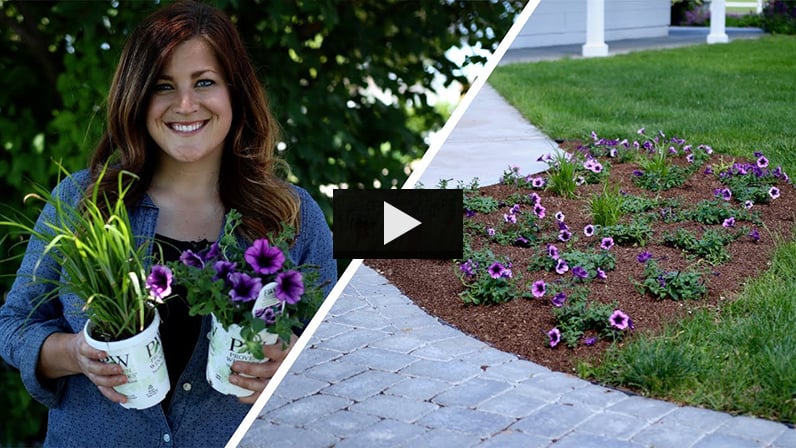Annual Flowers
How to use annual flowers and plants to add personality to your gardenAnnual plants germinate, grow, flower, set seed, and die all in one growing season. The first frost usually signals the end of the season for annuals and most need to be replanted each year. Some will set seed if the flowers are left to produce seed heads and return the following year.
Many gardeners grow annuals for seasonal color alongside existing perennials, shrubs, and trees. They come in all shapes, sizes, and colors. Some produce amazing flowers, while others are all about striking foliage.
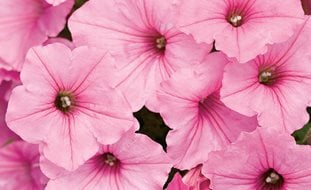
Here are 14 great annuals for getting started.
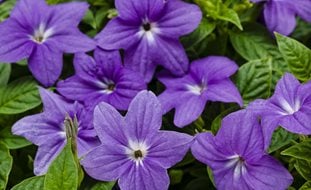
Choose the best shade annuals for your garden.
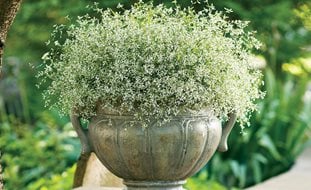
Selections for full-sun containers, beds, baskets, and window boxes.
POPULAR ANNUALS
See Proven Winners' most popular annuals for 2024
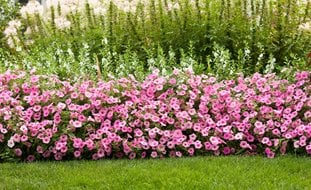
A guide to growing gorgeous petunia flowers in your garden or in containers.
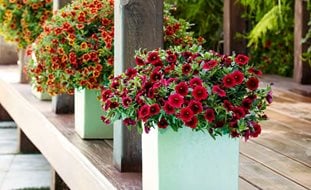
Grow magnificent Calibrachoa for nonstop bloom during warmer months.
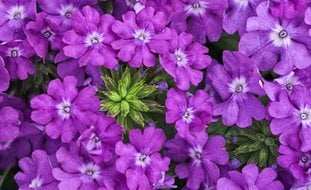
For color from spring until frost, it’s hard to beat these long-flowering, sun-loving plants.

These annual flowers are easy-to-grow in containers or summer borders.
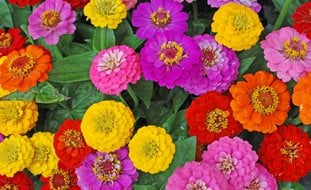
Bring your summer garden to life with these colorful, easy annual flowers.
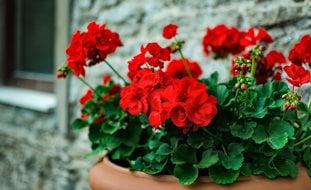
Tips for properly planting geraniums and care advice that will keep them looking their best.

The uses for this beloved flowering plant are endless.

Prolific blooms of this delightful annual sizzle in the heat of summer.

These tough, mildew-resistant cultivars will keep your garden in bloom all season long.

Planting, growing, and caring for these shade garden and houseplant superstars.

Bring brilliant color to the cool-season garden. Get tips for growing, planting, and caring for pansy flowers.

These sun-loving, heat-tolerant annuals come in more colors and varieties than ever before.
Other popular annual flowers and plants:
PROS & CONS OF PLANTING ANNUALS
Pros:
- Annuals are easy to grow and offer brightly colored flowers for instant impact
- They are versatile and can be grown in garden beds, hanging baskets or containers
- If properly planted and cared for, many annuals will bloom nonstop from planting to frost
- Color choices include purple, bi-color, pink, blue, red, yellow, coral, orange, white and even black!
- You can find annuals for every situation: deer, sun, shade, low maintenance…you name it
Cons:
- Unlike perennial plants which return year after year, they complete their life cycles in a single season and must be replanted yearly
- Many annuals require deadheading, or the removal of spent buds, to keep them blooming
- Annuals often benefit from frequent applications of fertilizer to keep them looking their best
- Daily watering is usually necessary, especially in summer heat
PLANTING TIPS
When it comes to growing these garden favorites, you have two choices: purchase the plants in flower or start them yourself from seed. If you are looking for instant gratification, buying starter plants will be best. However, if you want to save some money and aren't in a rush, seeds can be cheaper.
Here are some tips for planting annuals in the landscape:
- When planting young annuals make sure you are giving them enough space to reach their full size
- Add slow-release fertilizer to the planting hole to get your plants off to a good start
- Make sure you plant them in a spot where they’ll receive the right amount of light
- Check the weather, it is safest to plant when all danger of frost has passed
- If the roots are twisted and dense when removed from the growing pot, loosen them slightly by hand or run a knife down the sides
- Don’t leave annuals in six-packs or flats for long, getting them in the ground or container quickly is best
- Water your new plants well immediately after planting
- Spread a layer of mulch after planting to complete the look, reduce water loss and prevent weeds
TYPES OF ANNUALS
Annuals can be divided into three groups: hardy, half-hardy and tender, based on their cold tolerance. This classification will determine how close to the last frost date in spring that they can be planted, which will vary by location.
- Hardy annuals do well in cooler weather. They are able to withstand some freezing temperatures and can be planted the earliest. These types will also do well when planted in fall when temperatures begin to drop.
- Half-hardy annuals will tolerate a touch of frost and most common annuals fall into this category. If a surprise spring frost arrives, be prepared to cover them at night.
- Tender annuals can’t take any frost and most have originated in tropical or sub-tropical climates. Their growth may be stunted in cooler weather (above freezing) and they shouldn’t be planted until late spring.
Besides true annuals, there are tender perennials that are often grown as annuals in climates where they are not hardy. Check with your favorite local nursery for recommendations to grow in your area and when to plant them.
DESIGNING WITH ANNUALS
As garden centers start to fill up in spring with enticing displays of annuals, it's easy to grab everything you can and think about where to plant it all later. If you want a cohesive design (face it, we all know that looks better), here are a few essential tips for designing with annuals:
- Before you get in your car to go plant shopping, evaluate the areas in your garden where you want annuals. Measure the size of the spaces, know the sun and shade patterns throughout the day, think about how the areas will be viewed and take stock of what plants are nearby.
- In a bed of strictly annuals — unless you're buying a mix of plants that is intended to go together, as with some pansies — stick to larger quantities of a few types of plants, rather than the overbusy look of a few of everything.
- Not all plants need to have flowers to be great additions to the garden. Foliage plants such as coleus, Persian shield, 'Magilla' perilla, Joseph's coat and copper leaf add color and texture whether used as filler or focal point.
- Color combinations can complement, contrast or match. Too much contrast can be jarring, and too much of the same color can be monotonous. Use several colors in a limited palette that work well together for a cohesive and pleasing look. Arrange samples on the ground at the garden center to see if they will work — chances are, if they look good together in a flat, they'll look good in the garden!
- Repeat colors and forms to lead the eye through the garden.
- Use a variety of textures to give the garden energy. Too many plants with either a fine or a bold texture can be boring to look at.
- If you're tucking annuals into a perennial bed, keep in mind the ultimate sizes of the annuals and the perennials so that none of the plants are later overwhelmed by their neighbors.
5 Tips for Adding Annual Color


